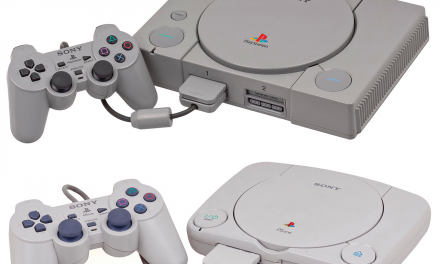Gaming is going through significant changes as cloud gaming becomes more popular. Just like Netflix changed how we watch movies and Spotify changed how we listen to music, cloud gaming is transforming how we game. Instead of needing a high-end gaming PC or the latest console, players can now stream top-tier games on almost any device, smartphones, tablets, smart TVs, and even web browsers—all thanks to powerful remote servers doing the heavy lifting.
With subscription-based models, players can access a massive library of games without spending hundreds on new hardware or individual titles. Cloud gaming also makes it easier to play across different devices, pick up games instantly without downloads, and even extend the lifespan of older titles.
Whether you are smashing Forza from your sim rig or jumping into Fortnite with friends, cloud gaming just makes a lot of things better. Cloud gaming has transformed the online casino industry by enhancing accessibility, user experience, and operational efficiency. Casino players can access roulette games with BTC, slots with Tether, or live dealer games like poker using their smartphones.
Traditionally, gaming required powerful PCs or consoles to run graphically intensive titles. However, cloud gaming eliminates this dependency by shifting processing power to remote data centers, allowing players to stream high-performance games on low-end devices.
With cloud gaming, users can enjoy AAA games on smartphones, tablets, smart TVs, and even web browsers without the need for expensive upgrades. Services like NVIDIA GeForce Now, Xbox Cloud Gaming, and PlayStation Plus leverage powerful cloud servers to handle processing, rendering, and storage, meaning players only need a stable internet connection to access and play their favorite titles.
Traditionally, games would become obsolete with new console generations, requiring remasters, ports, or backward compatibility to stay relevant. With cloud gaming, games are processed on remote servers, making them accessible on any device without hardware limitations. This means older titles don’t require updates or new ports to remain playable.
Additionally, live service games and continuous updates are easier to implement. Since cloud gaming eliminates the need for local installations, developers can seamlessly update games without requiring players to download patches or expansions. Titles like Fortnite, Destiny 2, and Apex Legends benefit from this model, as players can always access the latest version instantly.
Since cloud gaming ensures that the latest games remain accessible on older or lower-spec devices, the need for frequent PC or console upgrades is greatly reduced. Similar to how Netflix and Spotify revolutionized media consumption, cloud gaming services provide a more cost-effective way to experience a variety of titles. Platforms like Xbox Game Pass Ultimate, PlayStation Plus, NVIDIA GeForce Now, and Amazon Luna offer tiered subscription plans, granting players on-demand access to hundreds of games.
Hardware upgrade expenses are also significantly reduced. Since cloud gaming runs on powerful remote servers, players no longer need to invest in expensive gaming PCs or next-gen consoles. By shifting toward a rental-based model, cloud gaming is gradually replacing the traditional buy-and-own system, creating a more cost-effective and accessible gaming economy.
In the past, gaming was restricted to specific devices, requiring players to own compatible consoles or PCs to enjoy their favorite titles. Players are no longer tied to a single platform. They can launch a game on one device, say their smartphone, and proceed on another, like their laptop, without losing progress, creating a seamless gaming experience. Multiplayer games that once required players to be on the same console or PC can now be enjoyed across different devices, fostering a more unified and connected gaming community.
Unlike traditional gaming, which processes everything locally, cloud gaming relies on remote servers to render graphics and process inputs, making a stable, high-speed internet connection essential. One of the biggest concerns is latency —the delay between player input and on-screen response. In fast-paced genres like FPS, fighting games, and racing games, even slight input lag can make gameplay feel unresponsive.
Many services recommend a minimum internet speed of 10–20 Mbps for 1080p gaming and 35 Mbps or higher for 4K streaming, but performance varies based on network stability. To combat these issues, platforms have invested in low-latency protocols, AI-driven optimizations, and edge computing to reduce input lag. As internet speeds improve and cloud infrastructure advances, accessibility will continue to expand, making gaming more inclusive and reducing hardware-related restrictions.
One of the most significant factors of cloud gaming is its low entry cost. Services allow players to experience high-end gaming without expensive hardware, making it easier for gamers in developing regions to access premium titles.
Casual gamers who previously relied on mobile or browser-based games can now enjoy AAA experiences without investing in a dedicated gaming setup. As 5G and cloud infrastructure continue to improve, gaming will become even more inclusive and globally accessible, reaching audiences that were previously excluded due to hardware limitations. Cloud gaming is challenging the traditional console-based gaming model, making dedicated hardware less essential for enjoying high-quality gaming experiences.
Services handle processing, rendering, and storage in the cloud, meaning players only need a compatible device and a stable internet connection. With smart TVs, tablets, smartphones, and PCs now capable of running cloud-based games, the need for a physical console is diminishing. Many smart TVs are even integrating built-in cloud gaming apps, allowing users to play console-quality games with just a controller. In the future, consoles may become optional rather than essential, with cloud gaming providing an alternative way to play.











![[Rumor] Capcom is reportedly working on a new Dead Rising](https://vgleaks.com/wp-content/uploads/2025/12/capcom-logo-150x150.jpg)

